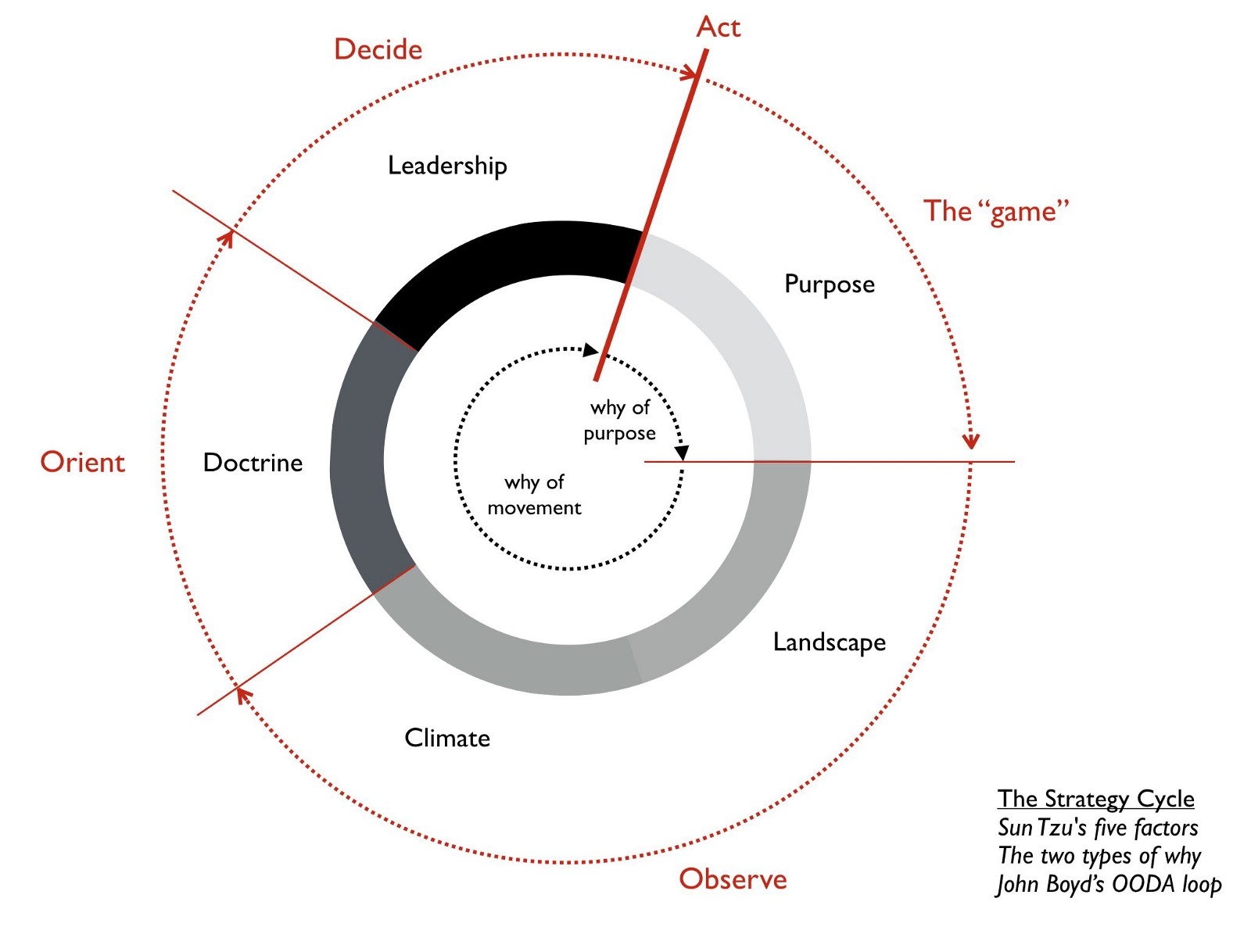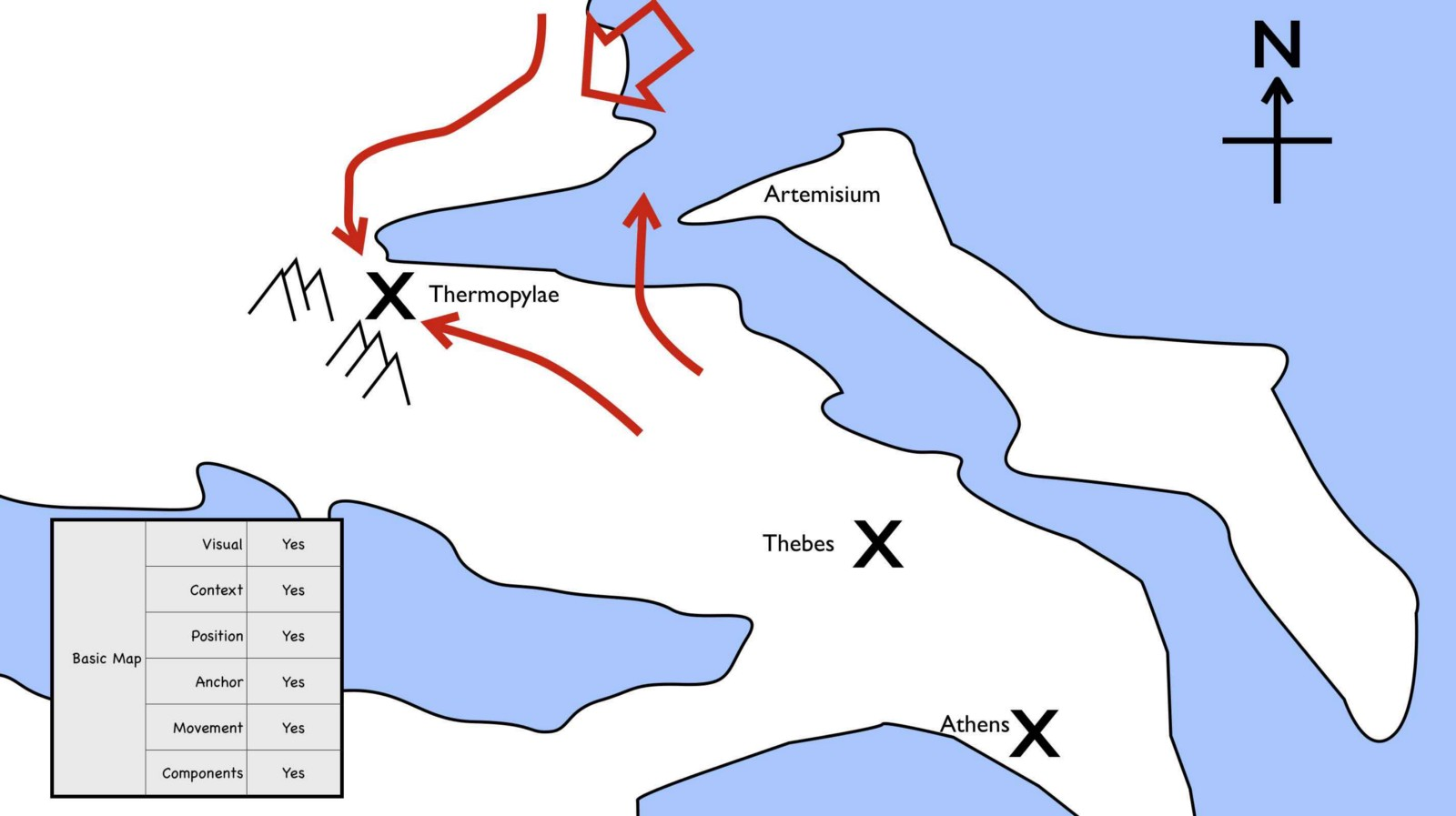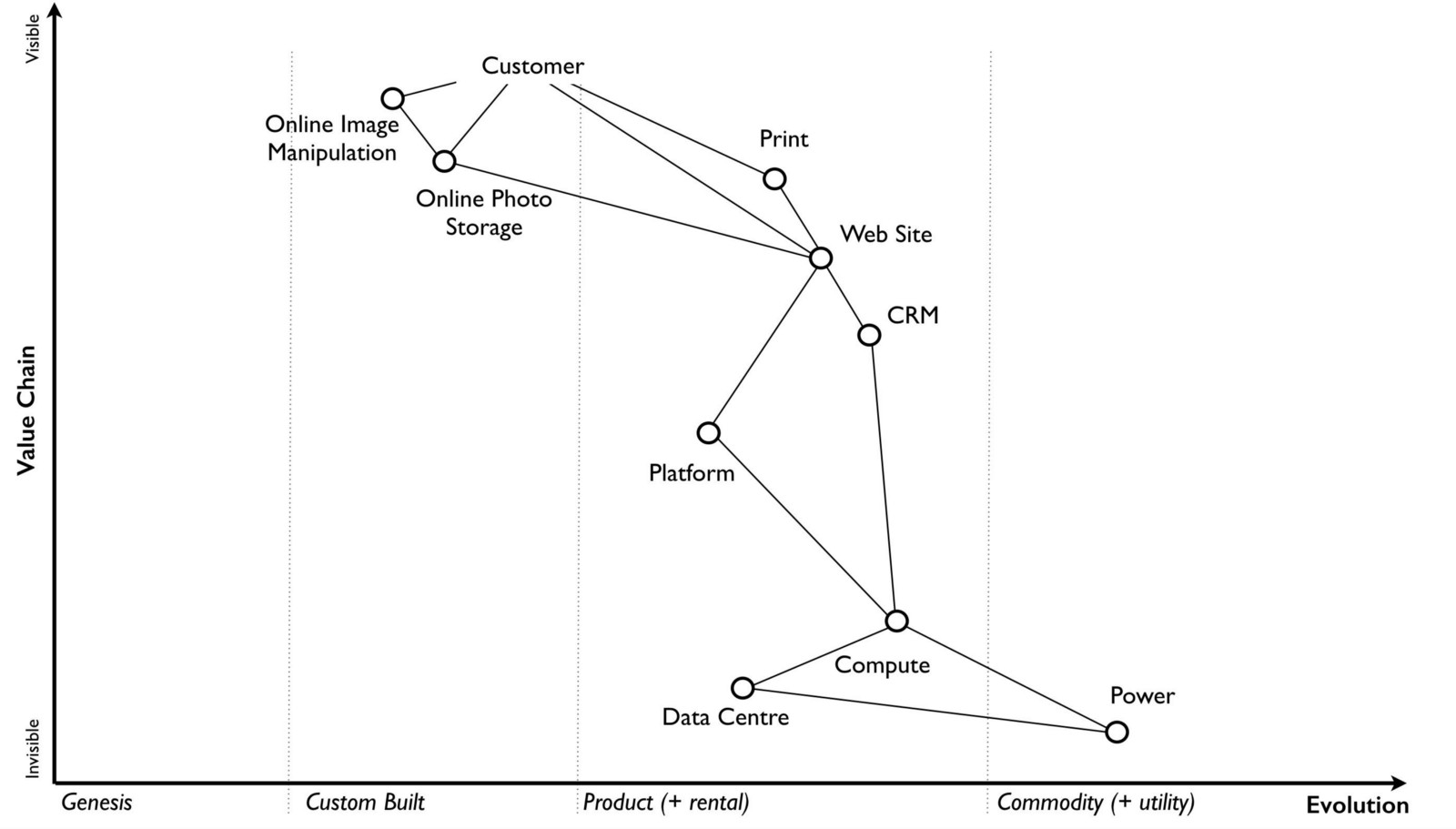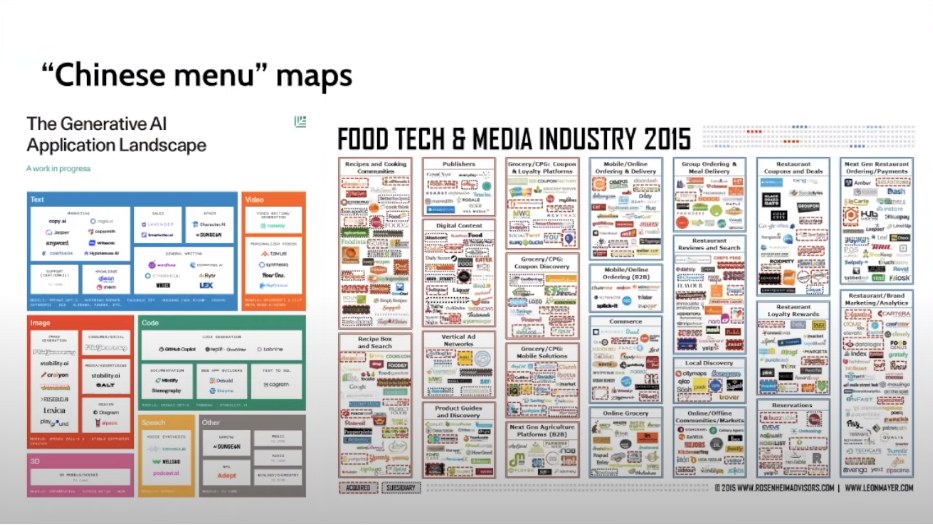mapping
which is a very specific frame, and makes us realize how, according to this perspective, most of the digital maps we use/interact with aren't maps at all. they're usually models, frameworks, sketches or illustrations.
yet, many people refer to them as maps, so i'll propose a different, more loose classification of maps taking into account other people's curation of popular maps as well:
types of maps:
1) wardley maps
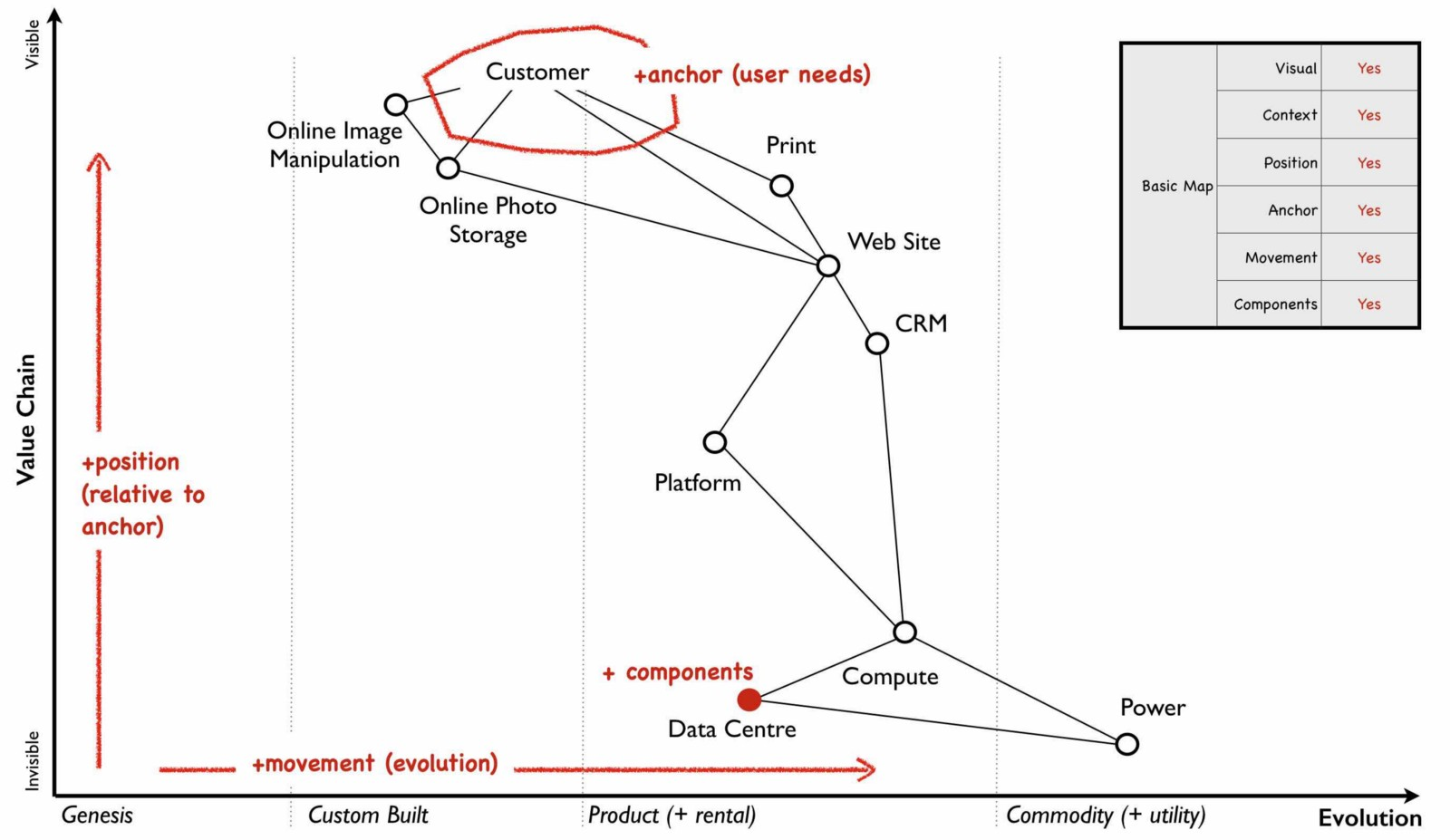
2) tang jeff's classification on twitter:
i highly encourage you to check out the whole thread, as pasting everything here would be flooding this page.
-> as a summary, he suggests:
1 - memespace maps
2 - ribbonfarm's maps
3 - defining characteristics of maps
4 - maps of maps (curating/organizing perspectives)
5 - wardley maps
6 - idea mazes
7 - subway maps (visual)
8 - topical maps/field maps (zoomable maps/maps with meaningful axes and proportions)
i think it can be enlightening to evidence the focus on topics vs the format.
memespace/subway maps/maps of maps are maps that refer to a specific topic.
ribbonfarm/wardley maps are "types" of map based on their style/format, which is derived from a specific creator.
idea mazes / field maps are also on the format side, but regardless of their creator.
3) nadia asparouhova's classification at the stoa:
source: https://www.youtube.com/watch?v=jvAyJImbEeA
i honestly don't recommend going through the whole thing, unless you have time to spare, as i believe the summary below captures the essence pretty well.
-> nadia's classification summary:
1 - skeumorphic maps
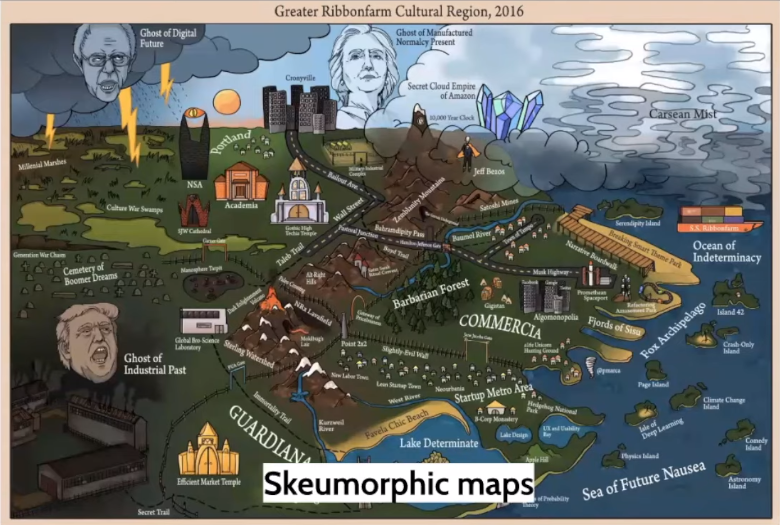
2 - schematic maps
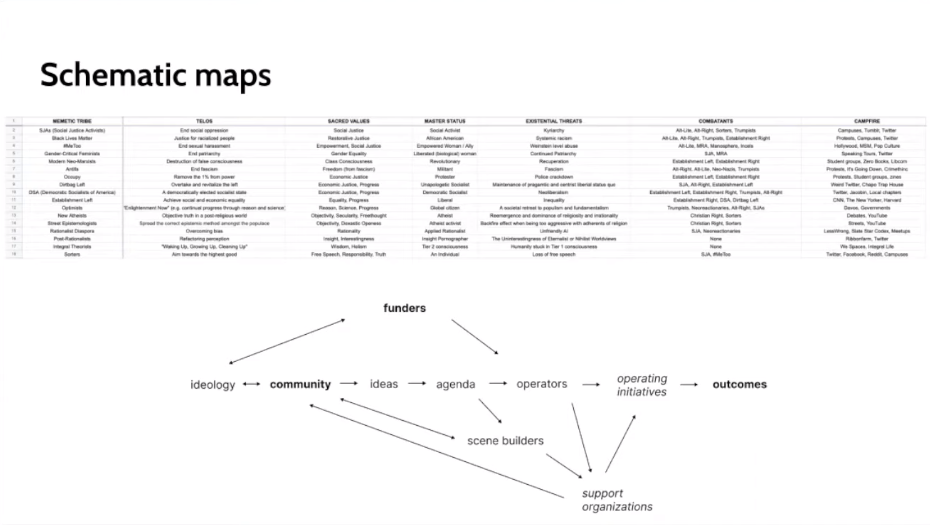
3 - matrix maps
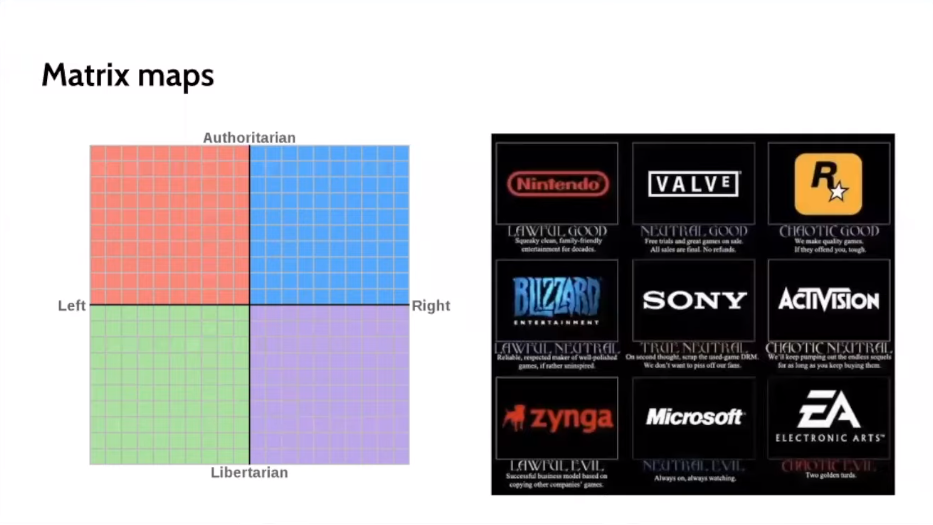
5 - word cloud maps
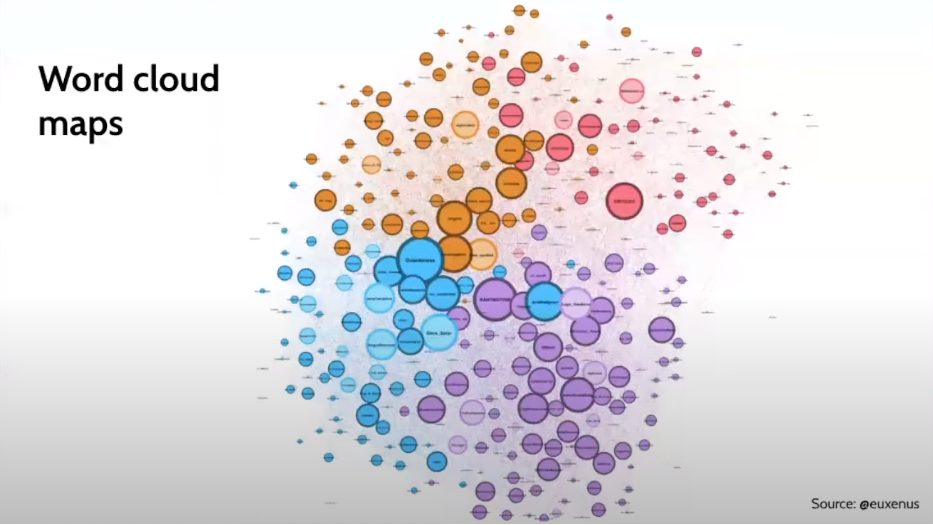
6 - type of guy maps

4) lastly, other types of common maps:
1 - ecosystem maps:
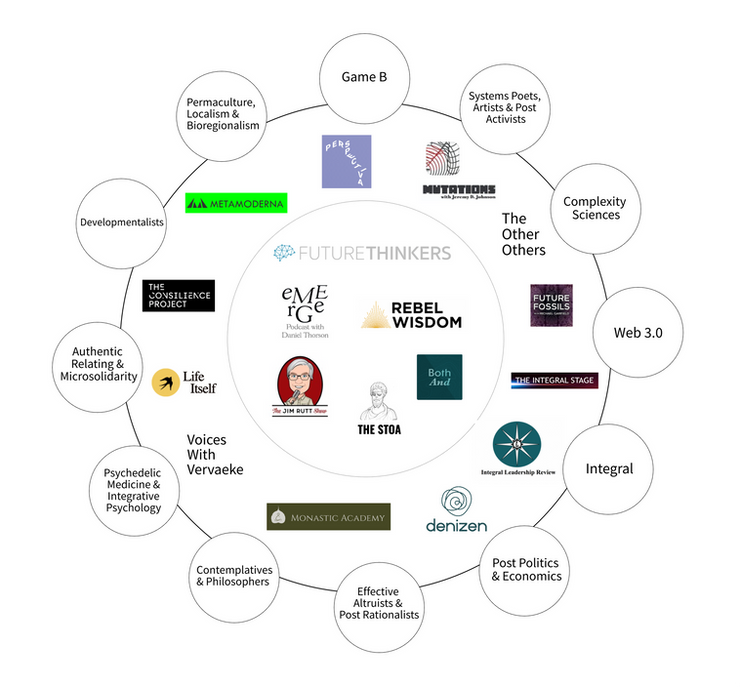
2 - concept maps (a.k.a. mental models/frameworks):
--> proposes a model that describes how something works or can work.
possibility management's thoughtmaps

3 - general knowledge maps / relationship maps:
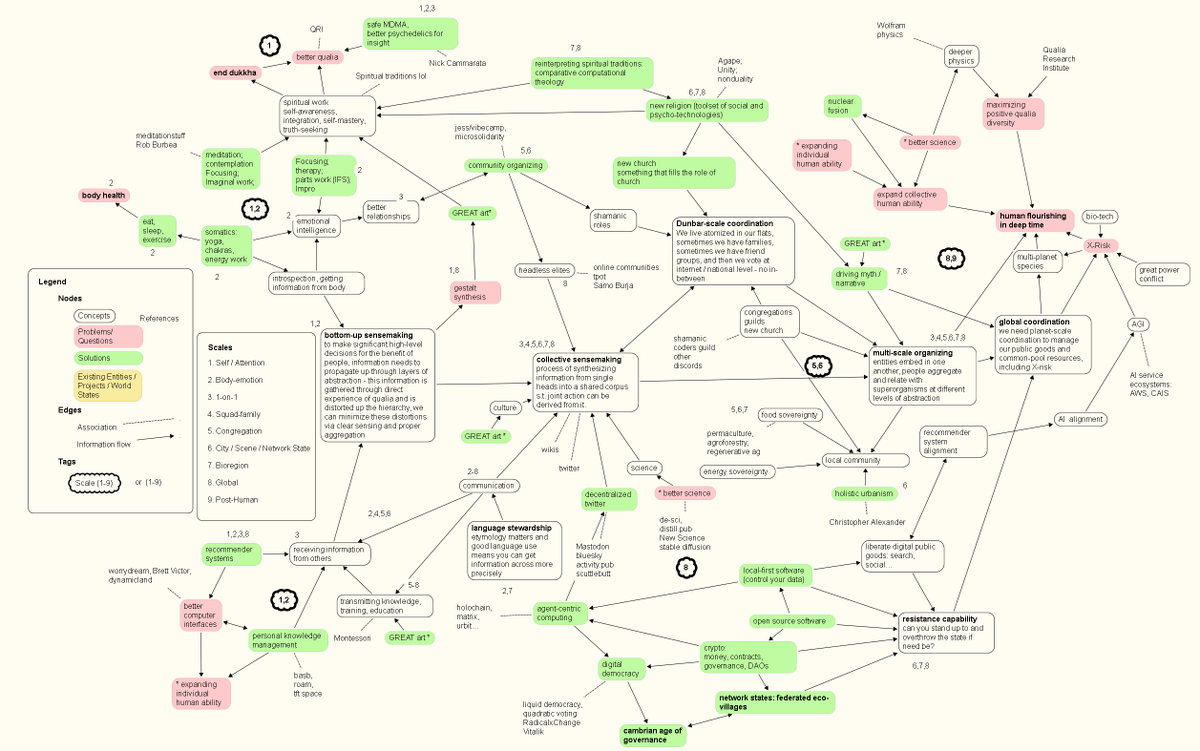
other interesting perspectives on mapping:
aaron z lewis on twitter:
⚠ i'm still missing: good curation on network science + good examples/applications.
list of internet mapping projects:
internet map:
https://www.halcyonmaps.com/#/map-of-the-internet-2021/
https://interneto.github.io/website/
map of youtube:
https://youtubeatlas.com/
https://github.com/KiranGershenfeld/YoutubeCommunities
map of twitter:
https://atlas.nomic.ai/map/twitter
https://github.com/Nican/Furland (deactivated)
https://twitterverse.net/
https://hive.one/explore
map of github:
https://anvaka.github.io/map-of-github/
map of scientific literature:
https://openknowledgemaps.org/
map of reddit:
https://anvaka.github.io/map-of-reddit/?x=18239&y=12514&z=23244.04817852816&v=2
https://subredditstats.com/
map of twitch: https://github.com/KiranGershenfeld/VisualizingTwitchCommunities
+ also relevant:
my twitter lists on:
maps of the sensemaking web:
"the memetric tribes of culture war 2.0" - the stoa - sept 2018:
https://medium.com/s/world-wide-wtf/memetic-tribes-and-culture-war-2-0-14705c43f6bb
"mapping digital worlds" - the stoa - nadia asparouhova - feb 2023:
https://www.youtube.com/watch?v=jvAyJImbEeA
life itself ecosystem map:
https://lifeitself.org/ecosystem
maps of regenerative communities:
regenerative orgs/communities 1:
https://www.refidao.com/ecosystem/organizations
regenerative orgs/communities 2:
https://www.gaianet.earth/ecosystem
#memetic:
"climate tribes" chart + research:
https://nadia.xyz/climate-tribes
"Impact DAOs" book:
https://store.gitcoin.co/products/impactdao-book-digital-edition
maps of conscious coliving spaces:
map of transformational communities:
https://tuckerwalsh.medium.com/transformational-communities-cd9e41053423
IC communities breakdown:
https://docs.google.com/spreadsheets/d/1FlLWdW5k4PKJ1T6rdcXy2cSwWUO-MInxCfpkCtuWhVY/edit#gid=2101869082
life itself discussion:
https://github.com/orgs/life-itself/discussions/391
themes/topics, perspectives/arguments, memes mapping
refs: the society library, golden, metaculus, ideamarket, open knowledge maps, mapsmap hackathon, the consilience project, kialo, nikiv.dev...
CEP+R
github resource lists
etc...
fine-tuned LLMs:
refs: cognicist iris, integral life, fourgames
